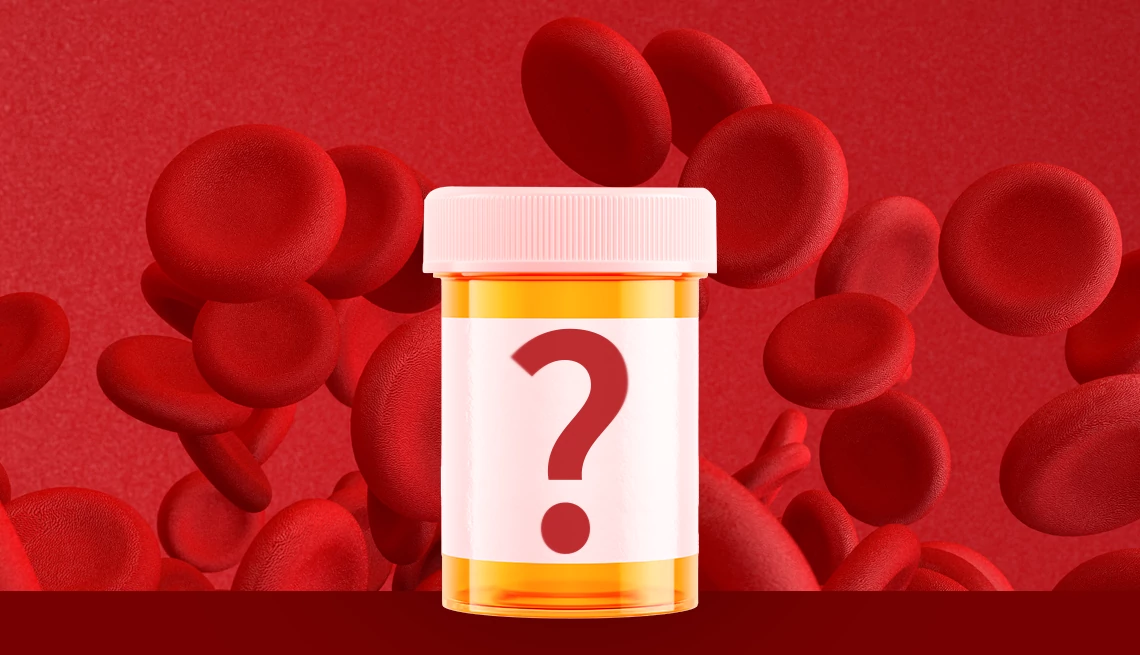AARP Hearing Center


Tina Ridler knew something was wrong last October when her right leg became swollen, achy and hot.
Her doctor suggested she go to the emergency department for a scan, where an ultrasound showed a large blood clot, which forms when components of the blood (red blood cells, platelets and protein strands called fibrin) clump together.
This kind of blood clot in the legs, also known as a deep vein thrombosis, can be a medical emergency. Clots can travel to the lung and cause a pulmonary embolism, a potentially fatal complication that prevents blood and oxygen from flowing through the lungs, says Karol Watson, M.D., a cardiologist and professor of medicine at the David Geffen School of Medicine at UCLA.
Blood clot symptoms
Not everyone who has a blood clot experiences symptoms.
If you have a blood clot in your leg or arm, you may notice:
- Swelling
- Pain or tenderness
- Warmth
- Redness or discoloration
Signs of a pulmonary embolism can include:
- Difficulty breathing
- Faster than normal or irregular heartbeat
- Chest pain or discomfort, which usually worsens with a deep breath or coughing
- Cough or coughing up blood
- Very low blood pressure, lightheadedness, or fainting
These signs and symptoms warrant immediate medical attention.
Source: U.S. Centers for Disease Control and Prevention (CDC)
Clots can form in other locations, as well. If clots lodge in arteries that supply blood to the heart, they can cause heart attacks. If they get stuck in a blood vessel leading to the brain, they can cause strokes.
Ridler’s doctors prescribed a fast-acting blood thinner, called a direct oral anticoagulant, to break up her clot quickly.
“When doctors saw my scan, they said, ‘Take this immediately,’” recalls Ridler, 59, who runs a wellness company in Rochester, Minnesota. The feeling she got was that “the clock was ticking.”
Every year, up to 900,000 Americans develop a blood clot, according to the Centers for Disease Control and Prevention, including 60,000 to 100,000 people who die from them. Older adults have a greater risk of developing one.
Clotting is a balancing act. For example, the body forms clots when someone cuts their finger in order to stop the bleeding. The clotting process helps create a scab over the wound to protect the body from germs and dirt. If blood didn’t clot in response to an injury, a person could bleed to death. As an injury heals, the body naturally dissolves the clot.
Sometimes, as in the case with deep vein thrombosis, clots form inside the blood vessels even if no injury has occurred, and they don’t dissolve on their own. When a blood clot forms in a vein, it can block the flow of blood as it travels back to the heart. This causes blood to accumulate behind the clot and build up pressure, resulting in the sort of pain and swelling that Ridler experienced in her leg.




































































More From AARP
Quiz: Can You Spot the Medication Errors?
Using prescriptions wisely is vital for your health
The 4 Most Common Pain Relievers and When to Use Them
Find the perfect OTC remedy for every ache
Medical Breakthroughs That Could Impact Aging
Advances that aim to keep us healthier, longer